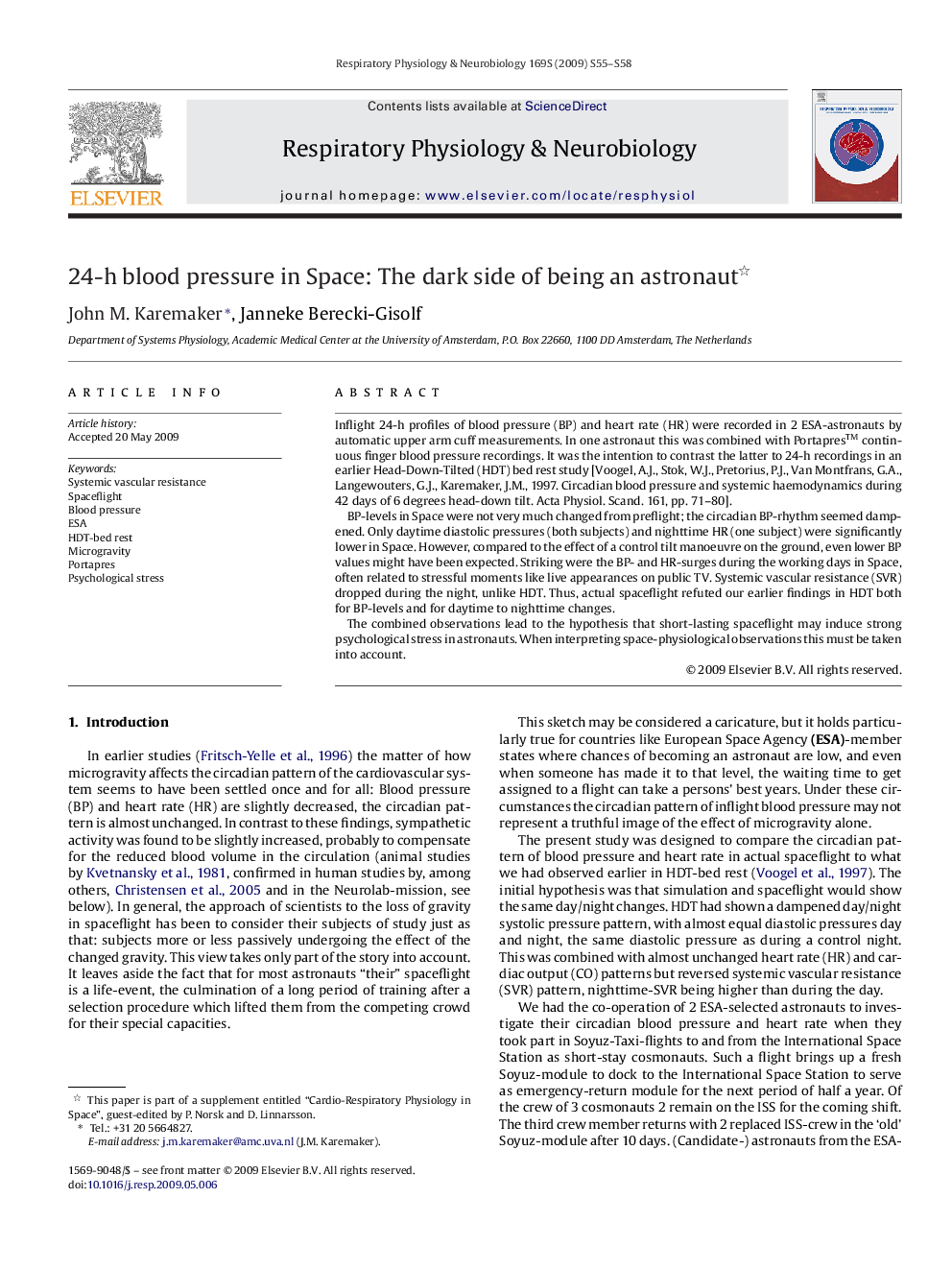| Article ID | Journal | Published Year | Pages | File Type |
|---|---|---|---|---|
| 2847828 | Respiratory Physiology & Neurobiology | 2009 | 4 Pages |
Inflight 24-h profiles of blood pressure (BP) and heart rate (HR) were recorded in 2 ESA-astronauts by automatic upper arm cuff measurements. In one astronaut this was combined with Portapres™ continuous finger blood pressure recordings. It was the intention to contrast the latter to 24-h recordings in an earlier Head-Down-Tilted (HDT) bed rest study [Voogel, A.J., Stok, W.J., Pretorius, P.J., Van Montfrans, G.A., Langewouters, G.J., Karemaker, J.M., 1997. Circadian blood pressure and systemic haemodynamics during 42 days of 6 degrees head-down tilt. Acta Physiol. Scand. 161, pp. 71–80].BP-levels in Space were not very much changed from preflight; the circadian BP-rhythm seemed dampened. Only daytime diastolic pressures (both subjects) and nighttime HR (one subject) were significantly lower in Space. However, compared to the effect of a control tilt manoeuvre on the ground, even lower BP values might have been expected. Striking were the BP- and HR-surges during the working days in Space, often related to stressful moments like live appearances on public TV. Systemic vascular resistance (SVR) dropped during the night, unlike HDT. Thus, actual spaceflight refuted our earlier findings in HDT both for BP-levels and for daytime to nighttime changes.The combined observations lead to the hypothesis that short-lasting spaceflight may induce strong psychological stress in astronauts. When interpreting space-physiological observations this must be taken into account.
